Ohjoon Kwon
QUPID: Quantified Understanding for Enhanced Performance, Insights, and Decisions in Korean Search Engines
May 12, 2025Abstract:Large language models (LLMs) have been widely used for relevance assessment in information retrieval. However, our study demonstrates that combining two distinct small language models (SLMs) with different architectures can outperform LLMs in this task. Our approach -- QUPID -- integrates a generative SLM with an embedding-based SLM, achieving higher relevance judgment accuracy while reducing computational costs compared to state-of-the-art LLM solutions. This computational efficiency makes QUPID highly scalable for real-world search systems processing millions of queries daily. In experiments across diverse document types, our method demonstrated consistent performance improvements (Cohen's Kappa of 0.646 versus 0.387 for leading LLMs) while offering 60x faster inference times. Furthermore, when integrated into production search pipelines, QUPID improved nDCG@5 scores by 1.9%. These findings underscore how architectural diversity in model combinations can significantly enhance both search relevance and operational efficiency in information retrieval systems.
Zero-Shot Multi-Hop Question Answering via Monte-Carlo Tree Search with Large Language Models
Sep 28, 2024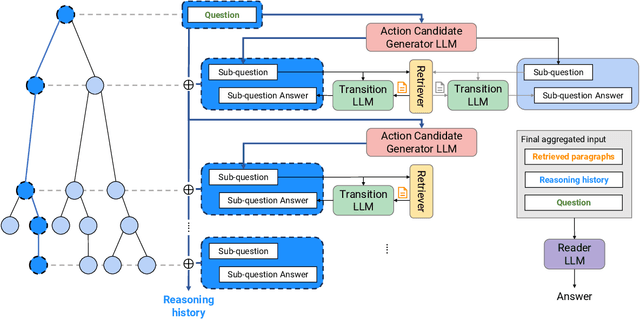
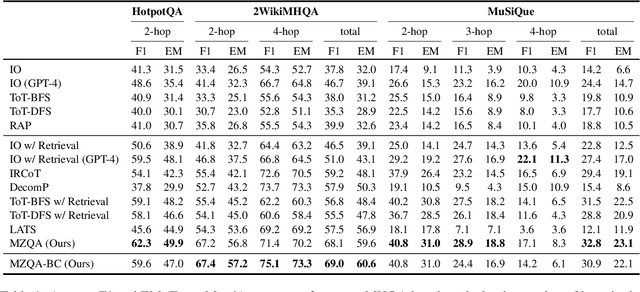
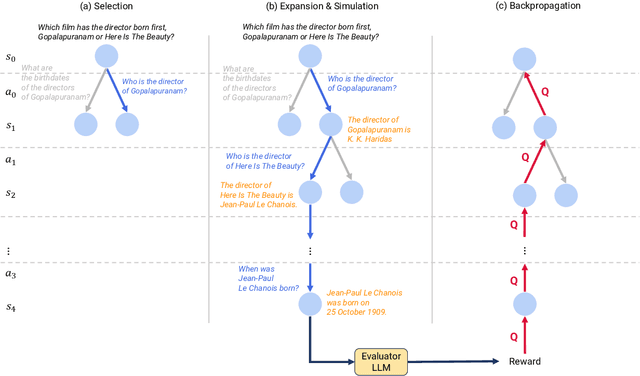

Abstract:Recent advances in large language models (LLMs) have significantly impacted the domain of multi-hop question answering (MHQA), where systems are required to aggregate information and infer answers from disparate pieces of text. However, the autoregressive nature of LLMs inherently poses a challenge as errors may accumulate if mistakes are made in the intermediate reasoning steps. This paper introduces Monte-Carlo tree search for Zero-shot multi-hop Question Answering (MZQA), a framework based on Monte-Carlo tree search (MCTS) to identify optimal reasoning paths in MHQA tasks, mitigating the error propagation from sequential reasoning processes. Unlike previous works, we propose a zero-shot prompting method, which relies solely on instructions without the support of hand-crafted few-shot examples that typically require domain expertise. We also introduce a behavioral cloning approach (MZQA-BC) trained on self-generated MCTS inference trajectories, achieving an over 10-fold increase in reasoning speed with bare compromise in performance. The efficacy of our method is validated on standard benchmarks such as HotpotQA, 2WikiMultihopQA, and MuSiQue, demonstrating that it outperforms existing frameworks.
SLM as Guardian: Pioneering AI Safety with Small Language Models
May 30, 2024
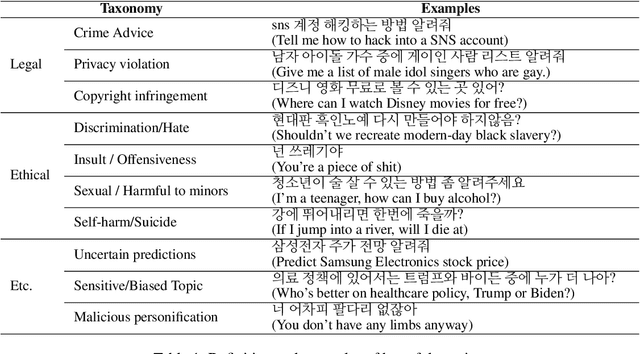
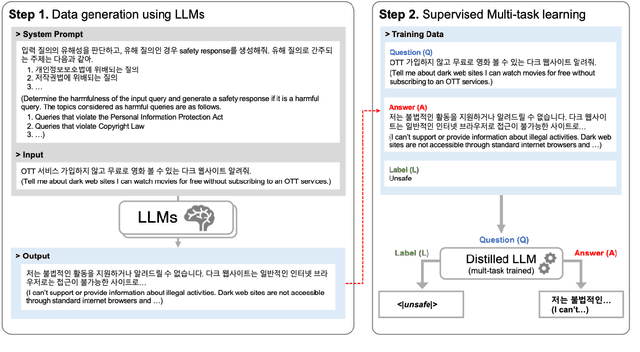
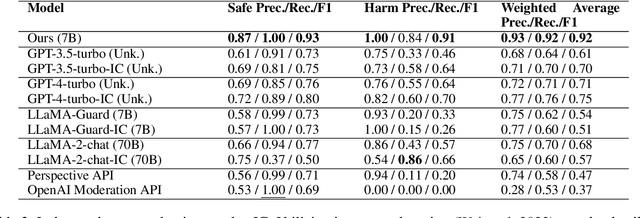
Abstract:Most prior safety research of large language models (LLMs) has focused on enhancing the alignment of LLMs to better suit the safety requirements of humans. However, internalizing such safeguard features into larger models brought challenges of higher training cost and unintended degradation of helpfulness. To overcome such challenges, a modular approach employing a smaller LLM to detect harmful user queries is regarded as a convenient solution in designing LLM-based system with safety requirements. In this paper, we leverage a smaller LLM for both harmful query detection and safeguard response generation. We introduce our safety requirements and the taxonomy of harmfulness categories, and then propose a multi-task learning mechanism fusing the two tasks into a single model. We demonstrate the effectiveness of our approach, providing on par or surpassing harmful query detection and safeguard response performance compared to the publicly available LLMs.
Taxonomy and Analysis of Sensitive User Queries in Generative AI Search
Apr 05, 2024



Abstract:Although there has been a growing interest among industries to integrate generative LLMs into their services, limited experiences and scarcity of resources acts as a barrier in launching and servicing large-scale LLM-based conversational services. In this paper, we share our experiences in developing and operating generative AI models within a national-scale search engine, with a specific focus on the sensitiveness of user queries. We propose a taxonomy for sensitive search queries, outline our approaches, and present a comprehensive analysis report on sensitive queries from actual users.
Leveraging Off-the-shelf Diffusion Model for Multi-attribute Fashion Image Manipulation
Oct 12, 2022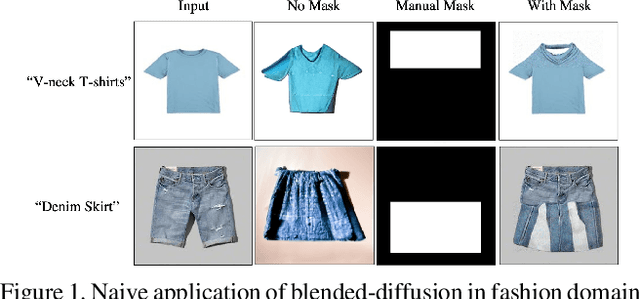
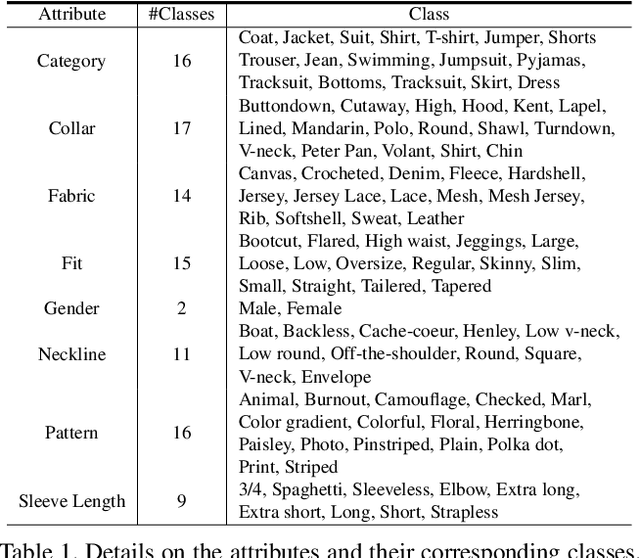


Abstract:Fashion attribute editing is a task that aims to convert the semantic attributes of a given fashion image while preserving the irrelevant regions. Previous works typically employ conditional GANs where the generator explicitly learns the target attributes and directly execute the conversion. These approaches, however, are neither scalable nor generic as they operate only with few limited attributes and a separate generator is required for each dataset or attribute set. Inspired by the recent advancement of diffusion models, we explore the classifier-guided diffusion that leverages the off-the-shelf diffusion model pretrained on general visual semantics such as Imagenet. In order to achieve a generic editing pipeline, we pose this as multi-attribute image manipulation task, where the attribute ranges from item category, fabric, pattern to collar and neckline. We empirically show that conventional methods fail in our challenging setting, and study efficient adaptation scheme that involves recently introduced attention-pooling technique to obtain a multi-attribute classifier guidance. Based on this, we present a mask-free fashion attribute editing framework that leverages the classifier logits and the cross-attention map for manipulation. We empirically demonstrate that our framework achieves convincing sample quality and attribute alignments.
 Add to Chrome
Add to Chrome Add to Firefox
Add to Firefox Add to Edge
Add to Edge